Am 02.04.2023 war ein Foto-Elsen-Tag geplant.
Unsere Erwartung war: Eichhörnchen.
Eichhörnchen in Bewegung war unser spezieller Wunsch.
Natürlich auch Vögel und was uns sonst noch so begegnet.
Planung ist alles …. eine Sache, die mir persönlich super schwer fällt 😉
Grundvoraussetzung ist natürlich einen Ort zu kennen, an dem sich Eichhörnchen aufhalten.
Es gibt hier ganz viele verschiedene Möglichkeiten – einfach mal ins Blaue zu fahren ist allerdings die denkbar schlechteste Option.
Eine Option ist zu googeln, es gibt Fotohütten, ja sogar Parks (z.B. Dortmund) in denen die Eichhörnchen super zahm sind und sogar auf die Hand bzw Kamera kommen.
Ich möchte aber die Tiere nicht nur fotografieren, sondern sie auch beobachten, wie sie sich verhalten.
An dieser Stelle gibt es immer wieder kontroverse Diskussionen über die Fotografie in einer Fotohütte.
Ich persönlich liebe es, in Fotohides zu fotografieren, weil
1. uns die Tiere nicht direkt sehen
2. wir die Tiere nicht stören (wenn alle Fotografen durchs Unterholz robben ist das wesentlich störender)
3. in der Regel ein Teil der Gebühren für solche Hütten in den Vogelschutz und für Schutzprojekte gehen
4. wir durch die tiefergelegten Hütten auf Augenhöhe der Tiere sind – für mich ein sehr wichtiger Aspekt.
5. Tiere entweder kommen oder auch nicht und eine Menge Unerwartetes passiert.
Es ist nicht so, daß zwingend jedes Mal eine Menge Tiere da sind und man einfach nur fotografieren muss und viele tolle Bilder hat – im Gegenteil…. (aber dazu später mehr).
Das scheint aber so die Meinung vieler zu sein 😉 Neeee, dem ist nicht so.
Die Tiere sind und bleiben wild und sobald sie Menschen sehen, flüchten sie sofort.
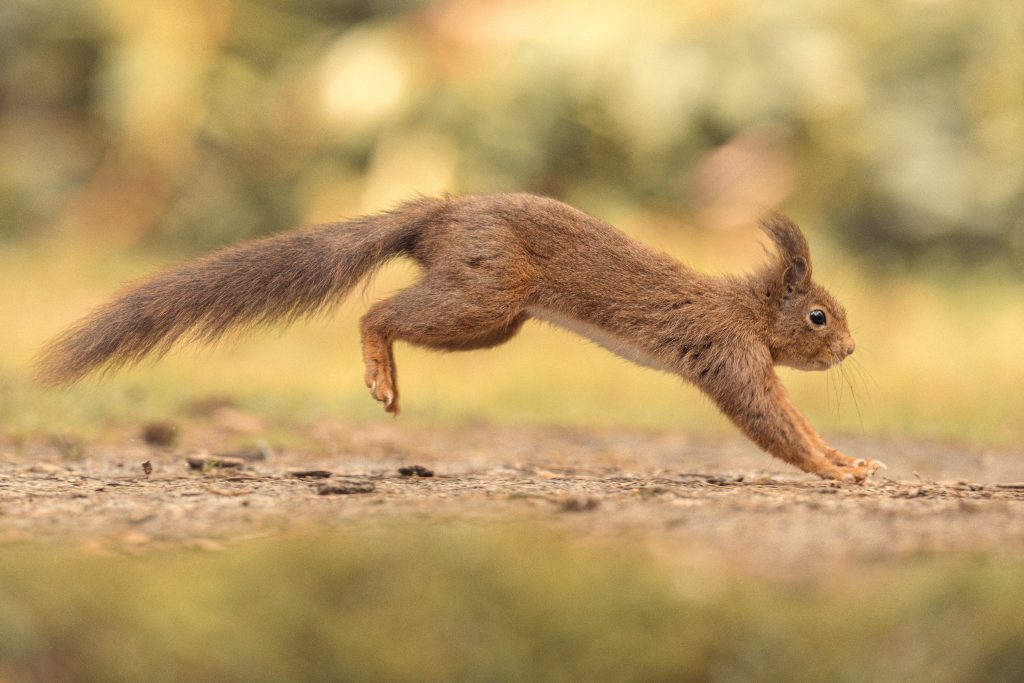
An der Stelle gleich der erste Fototip:
Tiere idealerweise immer in einer Aufwärtsbewegung fotografieren 😉 lach
Wenn wir nun also wissen, wohin es uns zu unserem Fototrip zieht, wären wir bei Alle Richtungen….
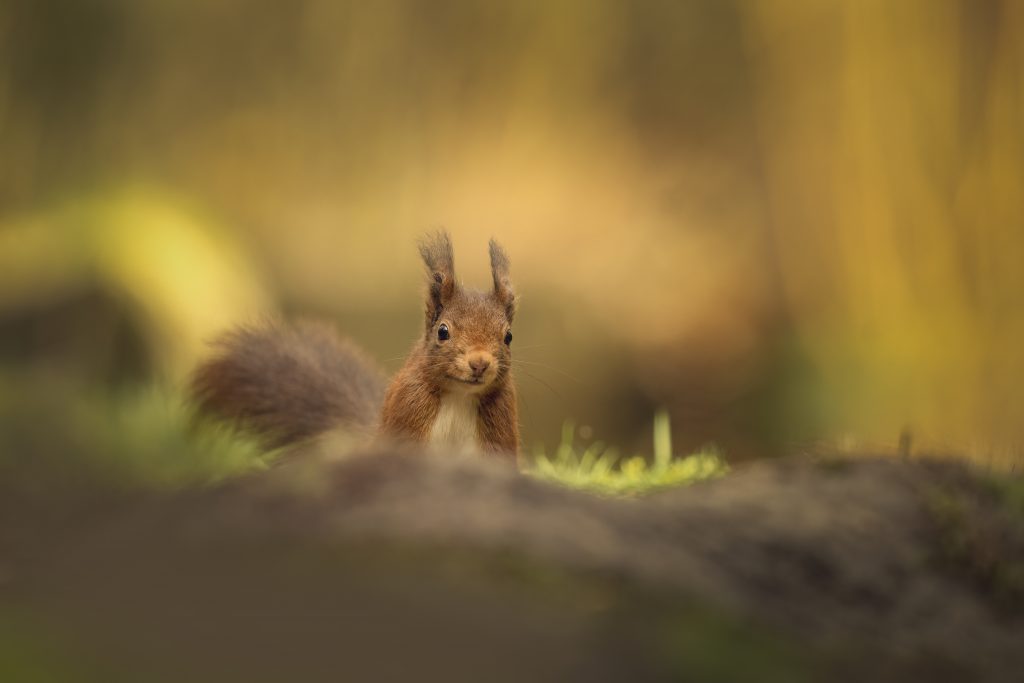
Chris sollte uns die Fahrtstrecke raus suchen – weil Männer dafür ja bekanntermaßen prädestiniert sind.
Da Claudi in Wuppertal wohnt und ich in Brilon, wollten wir uns auf der Strecke treffen.
Ein weiterer Nebeneffekt im nicht alleine fotografieren ist der Austausch über den neuesten Tratsch und Klatsch…
Wo also treffen und da suchte uns Chris einen Parkplatz aus, an dem wir beide vorbei kommen.
Auf meine Frage hin, wie denn die Navi-Adresse lautet, erntete ich großes Unverständnis.
Ich weiß nicht, ob es auch anderen Frauen so geht wir mir aber: Fahren sie nach Nordost, Starten sie Südwest und das Schild Alle Richtungen verursachen mir erhöhten Pulsschlag.
Wer bitte hat das erfunden?
Das sind doch Sätze, die uns überhaupt nicht weiterbringen…..
Gartenstraße 27 in 49999 Eichhornhausen
das ist eine Adresse, mit der ich was anfangen kann.
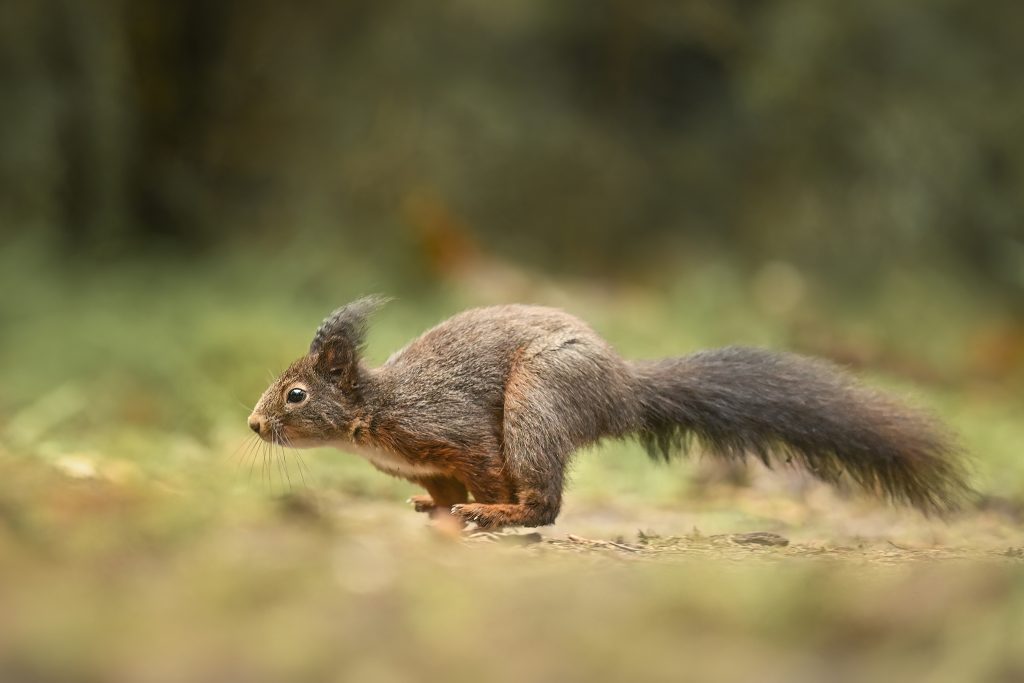
Ich packe mein Equipment grundsätzlich am Vorabend.
Das hat den Grund, weil ich da erstens weniger vergesse … 😉 und zweitens dann morgens mehr Zeit habe und niemanden wecke.
Einfache Dinge lade ich sogar schon ins Auto, während ich Kamera, Objektive, Geldbeutel, Kaffee und Brote erst morgens einlade – man weiß ja nie.
Folgendes Equipment habe ich ausgewählt und dazu sage ich auch noch ein paar Worte:
Kamera: Nikon Z9
Nikon D5 als Ersatzkamera
Warum 2 Kameras? Wenn möglich, habe ich immer eine Ersatzkamera dabei. Der Teufel ist ein Eichhörnchen und wenn einem zB eine Kamera vor Ort runter fallen sollte oder sich ein technischer Defekt einschleicht (was bei Nikon nicht passiert, lach), ist es noch ärgerlicher, wenn man dann auch noch ein paar hundert Kilometer gefahren ist.
Tatsächlich ist es mir auch schon passiert, daß mir eine Kamera beim Ausladen ans Auto geböllert ist und nicht mehr funktionierte – ich musste sie dann einschicken.
Achja… apropos einschicken
Immer wieder kommt die Frage, ob ich eine Kamera-Versicherung habe?
Ja, die habe ich.
Ich selbst bin bei der PundP GmbH
Pergande und Pöthe GmbH
https://www.pundpgmbh.de/
… und super zufrieden.
Versichert ist nicht der Zeitwert, sondern der Neuwert vom Nachfolgemodell.
Ich kriege nix für meine Empfehlung btw
Es bringt uns meist nichts, für unsere geliebte Kamera nur noch einen Rest-Zeitwert zu bekommen im schlimmsten Fall.
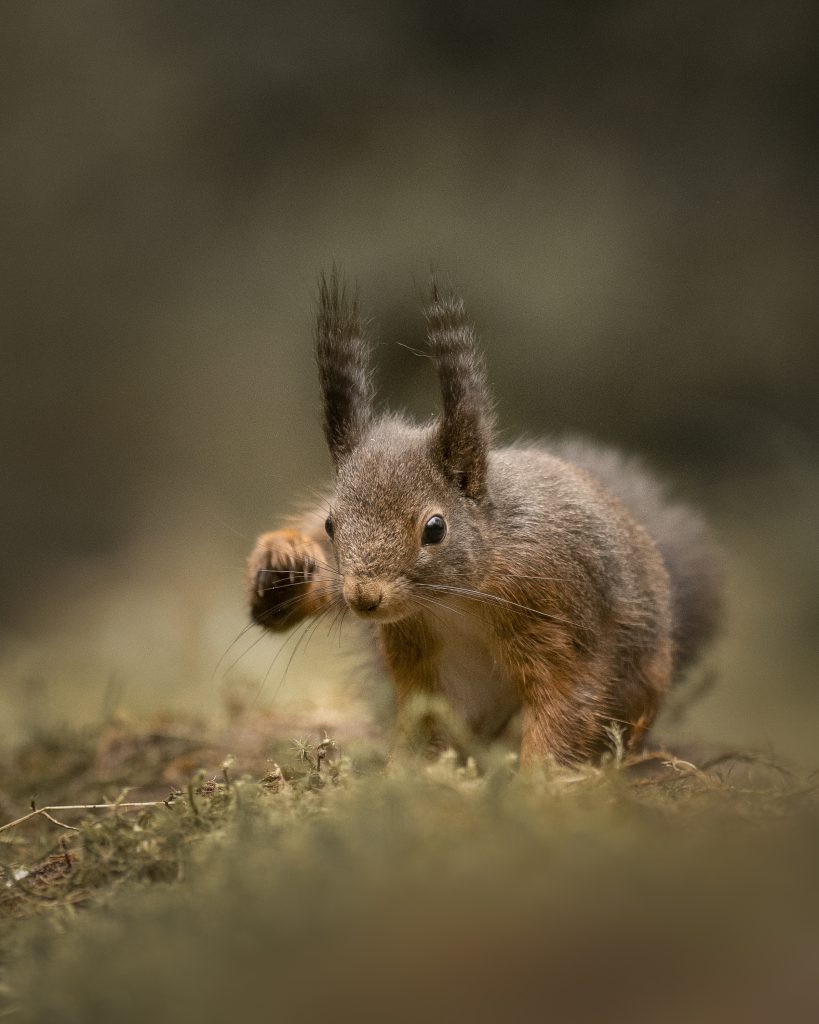
Das richtige Equipment……
… gibt es in dem Sinne eigentlich nicht. Das hängt natürlich davon ab, was man fotografieren will und wie hoch das eigenen Budget ist. Spiegelreflex oder Spiegellos? APS-C oder Vollformat? APS-C Kameras sind für Makro natürlich besser aber ich persönlich mag die Vollformat Kameras lieber. Sie sind brillianter und gerade in der WildlifeFotografie können wir Licht noch weniger planen und meist brauchen wir hohe ISO-Zahlen Was die Spiegellosen angeht, wollte ich früher nichts davon wissen und seit ner ganzen Weile bin ich absolut überzeugter Fan.

Spiegelreflexkamera oder Spiegellos
– spiegellose Kamera
Die Spiegellosen sind insgesamt kleiner und leichter und man sieht wegen dem digitalen Sucher direkt, was man fotografiert, auch die Helligkeit, Schärfe, Tiefenschärfe usw
– Spiegelreflexkamera
APS-C- oder Vollformatsensor
Die Spiegelreflexkameras haben eine Menge Zubehör (wobei da die Spiegellosen sicher noch nachziehen werden) und man kann seine Objektive alle weiterhin benutzen mit dem Adapter 1)
Wichtiger als der Body ist aber das richtige Objektiv.
Und hier gibt es natürlich alles.
DAS Objektiv gibt es nicht.
Für jeden Einsatz gibt es ein ideales Objektiv.
– Normalobjektiv
(entspricht in etwa dem menschlichen Sehen)
– Weitwinkelobjektiv
(wird in einem breiten Winkel gesehen,
der Mensch müsste also schon den Kopf drehen)
– Telezoom-Objektiv /Festbrennweite
(stellt vergrößert dar)
– Makro-Objektiv
(für Details)
Zwei Dinge sind wichtig: die Brennweite und die Lichtstärke
Beide Angaben sind meist auf dem Objektiv angegeben.
Für die Wildlife-Fotografie brauchen wir eine große Brennweite
Wir sind meist von den Wildtieren einfach weit weg
Eine gute Lichtstärke und ein schneller Autofokus sind auch von großem Vorteil.
Licht ist eines unserer grössten Probleme (aber davon auch später mehr)
Ein Konverter kann ebenfalls sehr hilfreich sein.
Ich habe den 1.4 und den 2.0 Konverter
Der Konverter wird zwischen Kamera und Objektiv gesetzt (nicht zu verwechseln mit dem Adapter) und vervielfacht eure Brennweite um 1.4 oder verdoppelt sie (2.0)
Das hört sich verlockend an, kosten ja gerade die großen Objektive so viel Geld.
Aber Achtung: Ein bisschen Qualität wird immer geschluckt und ihr vervielfacht auch eure Anfangsblende
Also wenn ich auf mein Nikkor 600mm, 4.0 einen zweifach-Konverter zwischen schalte, habe ich zwar 1200 mm Brennweite aber starte auch mit F/8 als kleinster Blendenzahl
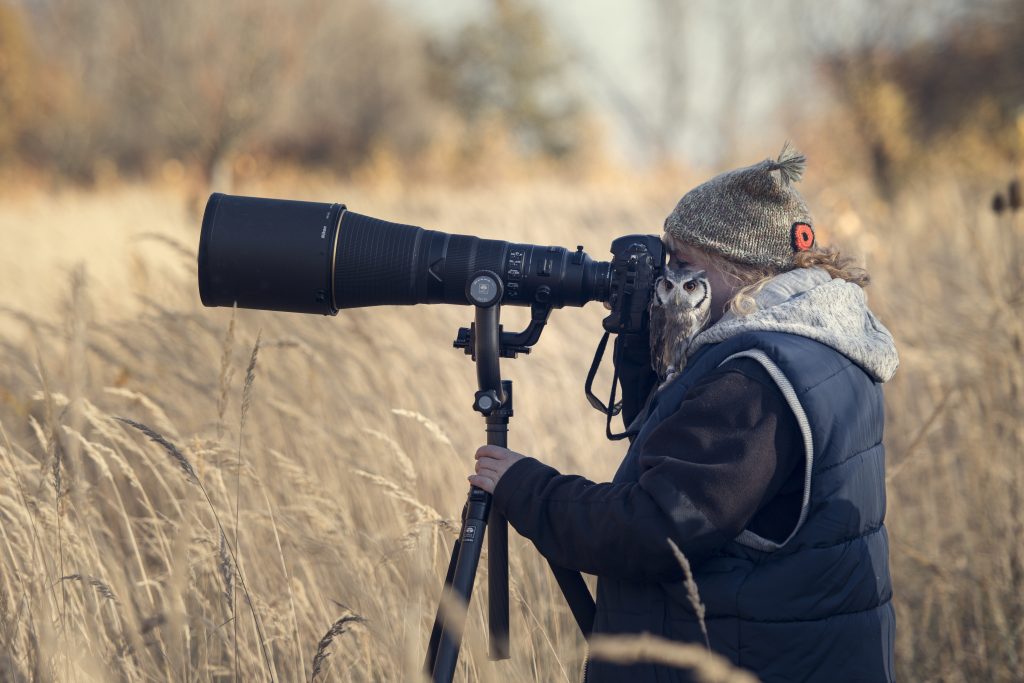
Zu prüfen ist noch, ob man ein Stativ braucht.
Bei Stativen bin ich noch ein bisschen am prüfen und testen aktuell – ich werde aber meine Erfahrungen berichten.
Am liebsten fotografiere ich bislang nicht mit dem Kugelkopt, sondern mit einem Gimbal.
Da habe ich den Sirui PH20 und bin super zufrieden.
Der ist auch vom Preis-/Leistungsangebot echt gut.
Denkt auch dran, daß ihr eine Stativplatte braucht. Das vergisst man schnell und die Dinger lässt man auch überall gerne mal liegen.
Ich mache meine tatsächlich nie ab, sondern lasse sie immer am Objektiv.
Auch wenn ich ganz normal mit meinem Nikkor 300mm, 2.8 Hunde fotografiere, habe ich immer die Platte dran.
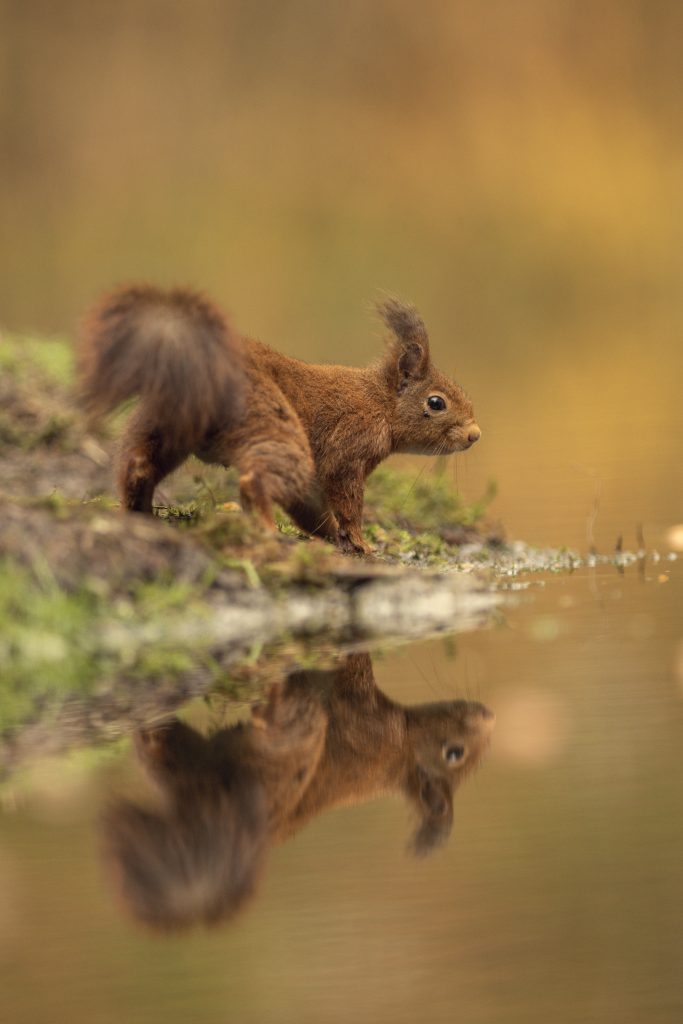
Aufstehen war um 4.30 Uhr, Abfahrt um 5.00 Uhr
Nur schnell Bad, Brote gemacht, Kaffeebecher und Verpflegung, Kamerarucksach und Objektive ins Auto.
Kamerarucksack ist von F-Stop – er muss so groß sein, daß meine Kamera mit dem 300 mm, 2.8 rein passt und die Ersatzkamera, sowie Konverter, Karten, Akkus, Tabletten und Bonbons 🙂
Man kann auch das Stativ dran befestigen usw
Getroffen haben wir uns am Autobahnparkplatz Herten, den Chris uns nach langem Genörgel via Whatsapp Google Maps Routenplaner geschickt hat.
Also nur zum draufklicken und los fahren 😉
Nix Südwest und alle Richtungen. Wir fuhren mit Claudis Auto weiter und ließen meins stehen.
Kurze Zwischengeschichte: als wir am Abend müde zu meinem Auto auf den Parkplatz zurück kamen, fuhr ein weißes Auto an uns vorbei und hielt ganz hinten unter Bäumen.
Claudi meinte: “Da war doch grad ein Auto, warum stieg da niemand aus?”
Ich sah mich um und entdeckte plötzlich überall Wohnwägen auf dem Parkplatz….
Ich meinte zu Claudi: “Der wird uns gesehen haben und hofft jetzt, daß wir nicht die Damen sind, die dort arbeiten… ;-)))) ”
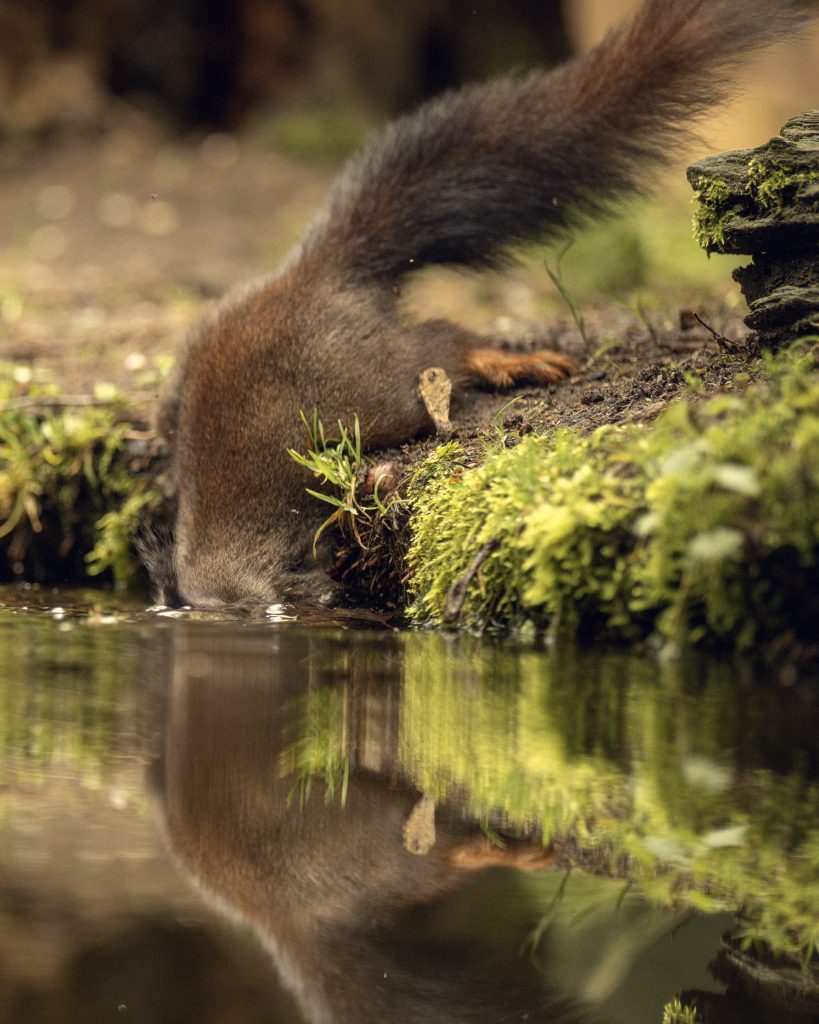
An der Location angekommen heißt es ausladen. Wir haben natürlich immer das ganz Auto voll.
Dafür habe ich mir letztens einen Wagen gekauft, den ich voll mega finde.
Erstens klappt man ihn auf und zu, Elsen können ihn noch super einladen und man kriegt alles darin unter.
Ich habe Geländereifen und er ist super leicht zu ziehen.
Millionen mal besser als Essen, Trinken, riesen Objektive und alles Equipment zu schleppen.
Wir bauen immer erstmal alles auf und schauen uns dann draußen um.
Ob Dreck im Wasser ist, irgendwelche Äste rumliegen oder sonst irgendwas zu tun ist.
So kann man direkt loslegen, sollten sich irgendwelche Tiere schon zeigen, sobald man in die Hütte geht.
Es bricht jedenfalls keine Hektik aus und gibt mir ein besseres Gefühl 🙂
Apropos immer bereit:
ein großes Problem sind die Einstellungen in der Wildlife Fotografie
Dazu komme ich aber noch. Ein riesen Tip nämlich noch kurz vorab.
Man sollte seine Sachen schon so hinlegen, daß alles im Dunkeln und in der Hektik schnell griff- bzw tastbereit ist.
Je nachdem was man fotografiert, kann man nicht mehr mit dem Handy leuchten. Das würden die Tiere sehen und sind sofort weg.
Eine Speicherkarte ist ja immer dann voll, wenn es hektisch wird.
Genauso wie ein Akku immer leer geht und rot blinkt, wenn überall was los ist.
Darum lege ich mir alles von Anfang an griffbereit bzw habe die Rucksackklappe offen, wo ich Speicherkarten und Akkus direkt mit reingreifen angeln kann.
Das selbe gilt für die Kamera.
Man sollte sie nach Möglichkeit blind bedienen können.
Es ist einfach furchtbar dunkeln in der Hütte oder in Tarnzelten und da muss man einfach wissen, welche Einstellung wo ist.
Das war Part 1 – verpasst bitte nicht den zweiten Part 🙂
Was wir alles erlebt haben, Einstellungen und vieles mehr
Das wird sonst zu lang auf einmal wieder
————————————————————–
Super-english:
On 02.04.2023 a photo Elsen day was planned.
Our expectation was: squirrels.
Squirrels in motion was our special request.
Of course also birds and what else we encounter.
Planning is all …. a thing that is super hard for me personally 😉
Basic requirement is of course to know a place where squirrels stay.
There are a lot of different possibilities – to just drive into the blue is the worst option imaginable.
One option is to google, there are photo huts, even parks (eg Dortmund) in which the squirrels are super tame and even come on the hand or camera.
But I don’t just want to photograph the animals, I also want to observe how they behave.
At this point, there are always controversial discussions about photography in a photo shack.
Personally, I love to photograph in photohides, because
1. the animals do not see us directly
2. we do not disturb the animals (if all photographers crawl through the undergrowth it is much more disturbing)
3. usually a part of the fees for such huts go to bird protection and conservation projects
4. because of the lowered huts we are on eye level of the animals – for me a very important aspect.
5. animals either come or not and a lot of unexpected things happen.
It’s not that necessarily every time a lot of animals are there and you just have to take pictures and have a lot of great pictures – on the contrary…. (but more about that later).
But that seems to be the opinion of many 😉 Nooo, that’s not the case.
The animals are and remain wild and as soon as they see people, they flee immediately.
At this point the first photo tip:
Ideally, always photograph animals in an upward motion 😉 laughing
If we now know where we want to go for our photo trip, we would be at Alle Richtungen….
Chris should pick out the driving route for us – since men are known to be predestined for this.
Since Claudi lives in Wuppertal and I in Brilon, we wanted to meet on the route.
Another side effect in not photographing alone is the exchange of the latest gossip …
So where to meet and there Chris picked us out a parking lot that we both pass.
On my question, as the Navi address is, I reaped great incomprehension.
I don’t know if other women feel the same way as I do, but: Drive northeast, start southwest, and the All Directions sign makes my pulse race.
Who invented this?
Those are nevertheless sentences, which do not bring us at all further…..
Gartenstraße 27 in 49999 Eichhornhausen
that is an address, with which I can begin something.
I pack my equipment in principle the evening before.
The reason is that I firstly forget less … 😉 and secondly have more time in the morning and do not wake anyone.
Simple things I load even already in the car, while I camera, lenses, purse, coffee and sandwiches only in the morning – you never know.
The following equipment I have chosen and I will say a few words about it:
Camera: Nikon Z9
Nikon D5 as backup camera
Why 2 cameras? If possible, I always have a backup camera with me. The devil is a squirrel and if a camera should fall down on location or a technical defect creeps in (which doesn’t happen with Nikon, laugh), it’s even more annoying if you’ve driven a few hundred kilometers.
In fact, it already happened to me that a camera banged against my car while I was unloading it and didn’t work anymore – I had to send it in.
Oh yes… apropos sending it in
Again and again the question comes up, if I have a camera insurance?
Yes, I do.
I myself am with PundP GmbH
Pergande and Pöthe GmbH
… and very satisfied.
The insurance does not cover the current value, but the replacement value of the successor model.
I get nothing for my recommendation btw.
It usually does us no good to get only a residual current value for our beloved camera in the worst case.
The right equipment……
… there is not really in the sense. Of course, it depends on what you want to photograph and how high your budget is. SLR or mirrorless? APS-C or full-frame? APS-C cameras are of course better for macro but I personally like the full frame cameras better. They are more brilliant and especially in wildlife photography we can plan light even less and mostly we need high ISO numbers As for mirrorless, I didn’t want to know about it before and since quite a while I am absolutely convinced fan.
reflex camera or mirrorless
– mirrorless camera
Mirrorless cameras are overall smaller and lighter and because of the digital viewfinder you can see directly what you are photographing, including brightness, sharpness, depth of field, etc.
– SLR camera
APS-C or full-frame sensor
The SLR cameras have a lot of accessories (the mirrorless cameras will surely follow) and you can still use your lenses with the adapter 1).
But more important than the body is the right lens.
And here, of course, there is everything.
There is no such thing as THE lens.
There is an ideal lens for every application.
– Normal lens
(corresponds approximately to human vision)
– Wide angle lens
(is seen in a wide angle,
so the human would have to turn his head)
– Telezoom lens /fixed focal length
(represents magnified)
– Macro lens
(for details)
Two things are important: the focal length and the speed.
Both of these are usually indicated on the lens.
For wildlife photography we need a long focal length
We are usually just far away from the wildlife
A good speed and fast autofocus are also a big advantage.
Light is one of our biggest problems (but more of that later)
A converter can also be very helpful.
I have the 1.4 and the 2.0 converter
The converter is placed between the camera and lens (not to be confused with the adapter) and multiplies your focal length by 1.4 or doubles it (2.0)
This sounds tempting, after all, it’s the big lenses that cost so much money.
But beware: A little bit of quality is always swallowed up and you also multiply your starting aperture
So if I put a double converter on my Nikkor 600mm, 4.0, I have 1200 mm focal length but I start with F/8 as the smallest aperture.
Another thing to check is whether you need a tripod.
With tripods I am still a bit to check and test currently – but I will report my experiences.
I prefer to photograph so far not with the Kugelkopt, but with a gimbal.
Since I have the Sirui PH20 and am super satisfied.
The is also from the price / performance offer really good.
Also remember that you need a tripod plate. It’s easy to forget and you can leave them lying around everywhere.
I actually never take mine off, but always leave it on the lens.
Even when I shoot dogs normally with my Nikkor 300mm, 2.8, I always have the plate on.
Got up at 4.30am, left at 5.00am.
Just quickly bath, sandwiches made, coffee mug and rations, camera backpack and lenses in the car.
Camera backpack is from F-Stop – it must be so big that my camera with the 300 mm, 2.8 fits in and the spare camera, as well as converters, cards, batteries, tablets and candy 🙂
You can also attach the tripod to it, etc.
We met at the freeway parking Herten, which Chris has sent us after long nagging via Whatsapp Google Maps route planner.
So just to click on it and go 😉
Nix southwest and all directions. We drove on with Claudis car and left mine.
Short intermediate story: when we came back tired to my car to the parking lot in the evening, a white car drove past us and stopped in the very back under trees.
Claudi said, “There was a car there just now, why didn’t anyone get out?”
I looked around and suddenly discovered caravans everywhere in the parking lot….
I said to Claudi: “He will have seen us and now hopes that we are not the ladies who work there…. ;-)))) ”
Arrived at the location it is called unload. Of course we always have the whole car full.
For this I bought a car the other day, which I find totally mega.
First, you fold it open and closed, Elsen can still load it super and you get everything under it.
I have off-road tires and it’s super easy to pull.
Million times better than food, drink, giant lenses and all equipment to drag.
We always set up everything first and then look around outside.
Whether there is dirt in the water, any branches lying around or anything else to do.
So you can start right away if any animals show up as soon as you go into the hut.
In any case, there is no rush and it gives me a better feeling 🙂
Apropos always ready:
a big problem are the settings in wildlife photography.
But I will come to that. A giant tip namely still briefly in advance.
You should put your things in such a way that everything in the dark and in the hustle and bustle is quickly at hand or ready to touch.
Depending on what you photograph, you can no longer shine with your cell phone. The animals would see that and are immediately gone.
A memory card is always full when things get hectic.
Just like a battery always goes flat and flashes red when there’s something going on everywhere.
That’s why I put everything at hand from the start or have the backpack flap open, where I can fish memory cards and batteries directly with reingreifen.
The same applies to the camera.
One should be able to operate it blindly if possible.
It is just terribly dark in the hut or in camouflage tents and there you just have to know which setting is where.
That was Part 1 – please don’t miss the second part 🙂
This will otherwise be too long at once again

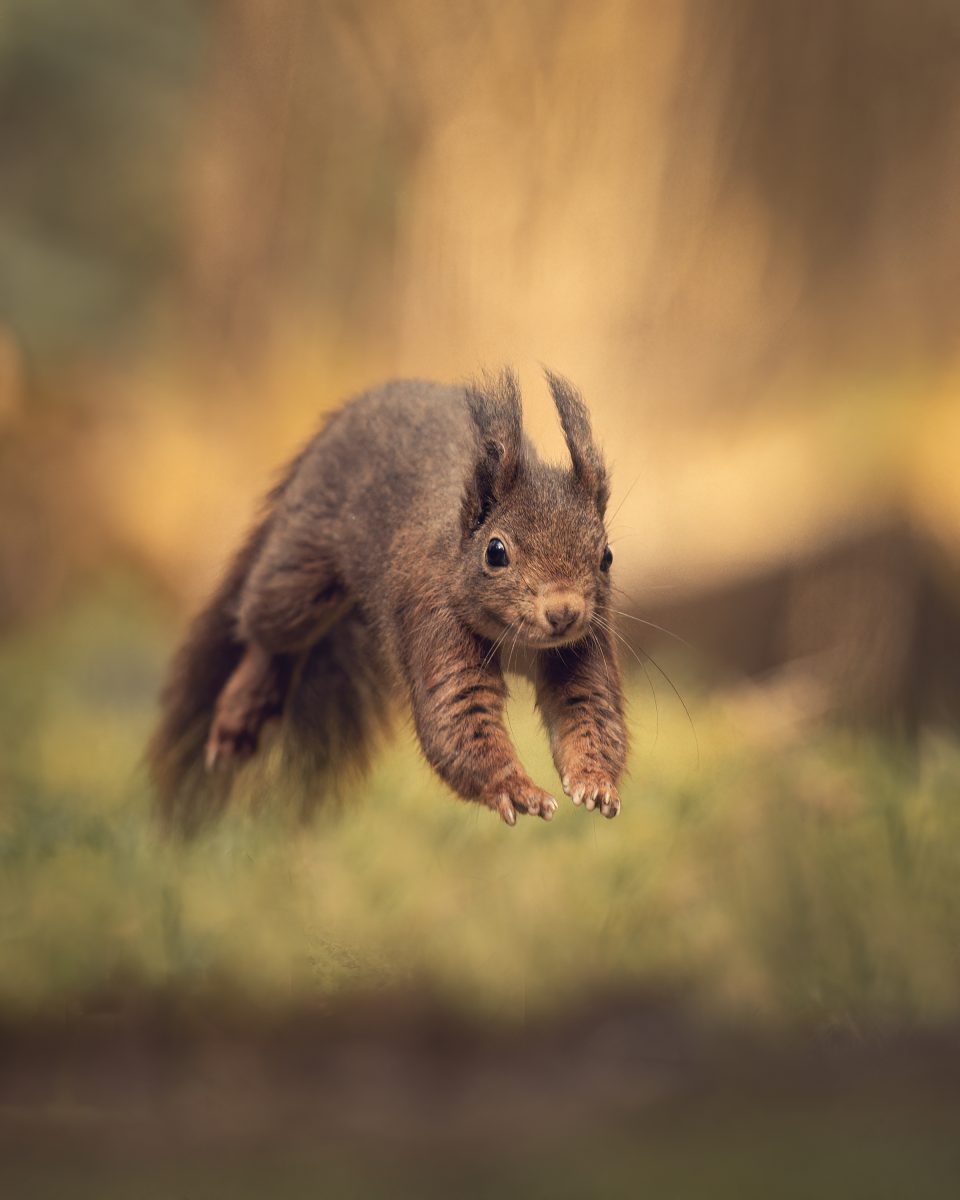
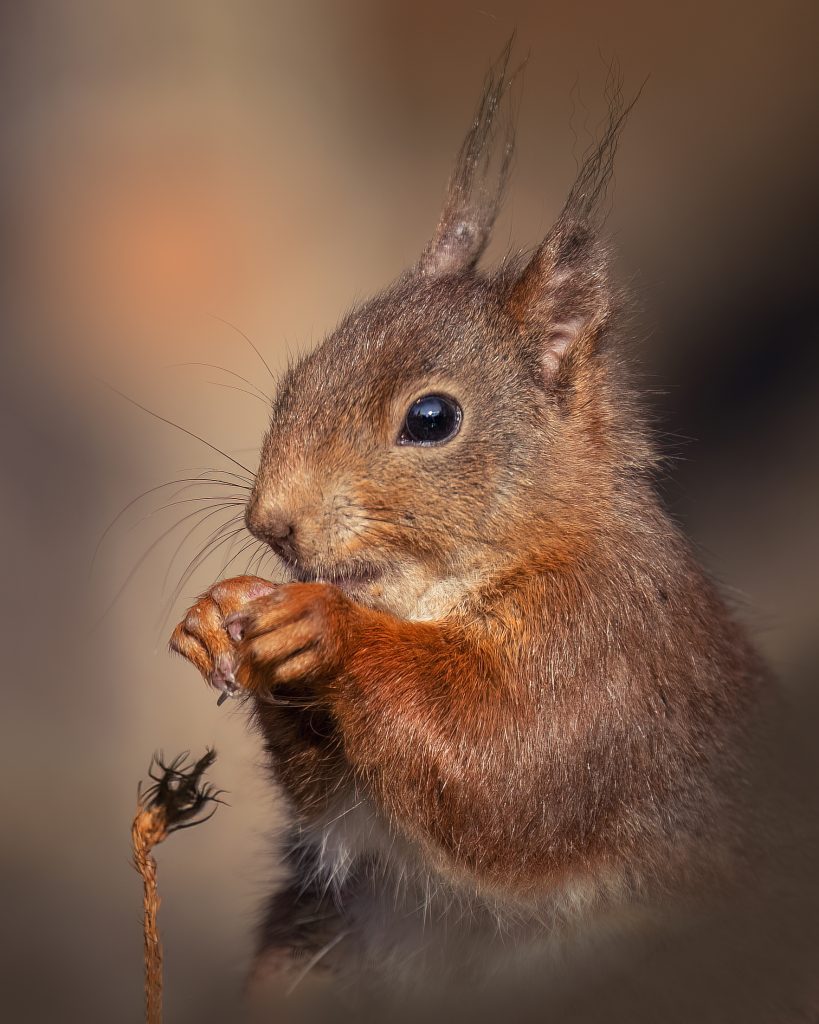
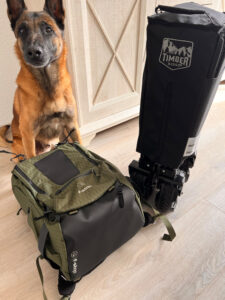
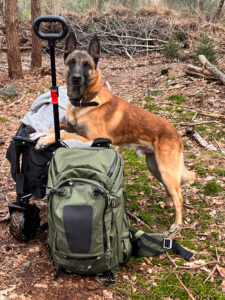
9 Kommentare
Hallöchen 🙂
das mit dem griffbereit haben und alles blind finden, kenne ich zu gut. Bei uns im Garten toben auch Eichhörnchen rum und auch wenn ich sie aus dem Badezimmerfenster zuvor noch gesehen habe, sind sie oft verschwunden, sobald ich wie ne Irre nach unten gerast bin, Schuhe an, Kamera geschnappt und mich hinters Auto verschanzt habe. Oft wünsche ich mir, ich hätte 50 Kameras *lach*
Danke für die bisherigen Tipps, auf den Konverter bin ich noch gar nicht gekommen. Vielen Dank dafür.
Liebe Grüße Nadine aus GF
💖
Toll beschrieben, vielen Dank.
Ich bin gespannt auf Teil 2
Liebe Tanja, wie immer finde ich auch diesmal deinen Blog wieder super. Mit vielen Tipps und Tricks und witzigen Erlebnissen von dir selber. Liebe Grüße und gute Besserung ,Maren
Ach , es ist so eine Freude deine Sachen zu lesen .Ich glaub ich könnte eine ganze Bücherserie von dir lesen und hätte dann auch noch nicht genug .🥰👍🥳
oha danke <3
…wie süss fotografiert und erzählt ist das denn…??! Ich schmelze dahin…🐿💗🥰🤞🏻👌🏻 🤘🏻🤠 …erheitert mein Gemüt 😇… sehr 🏡🌳 🌿🌴✨
Moin aus dem Norden, Dein Block ist so belebend, liest sich toll und so viele Informationen dazu. Freu mich auf den zweiten Teil. Liebe Grüße Doris
[…] Eichhörnchen fotografieren […]